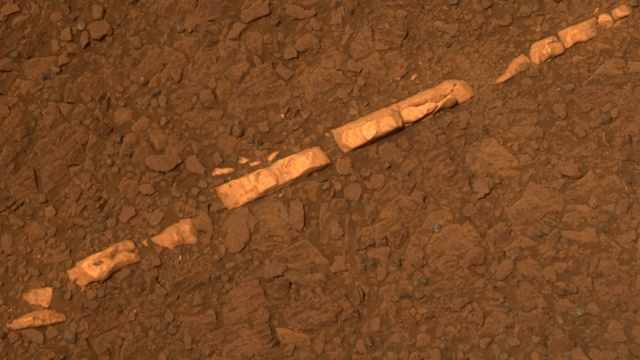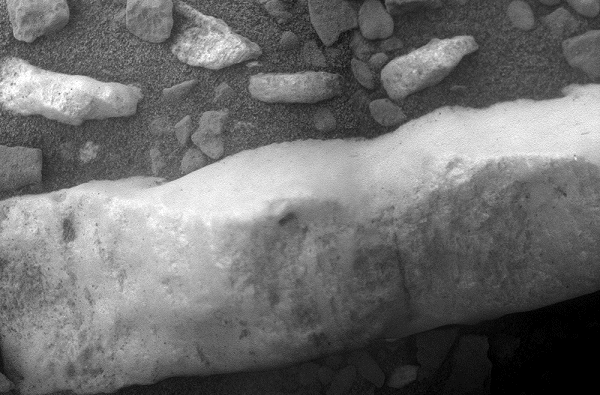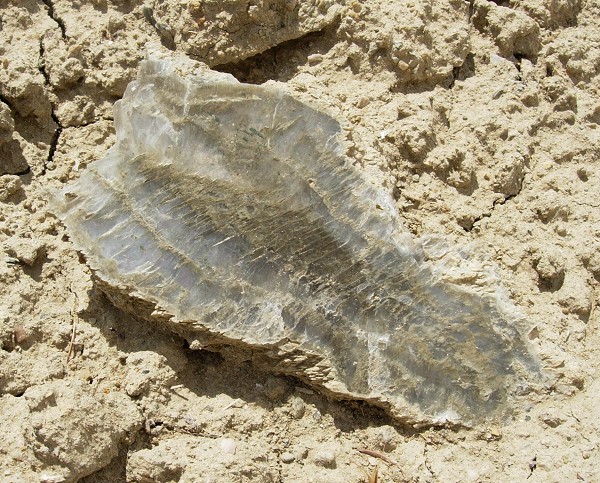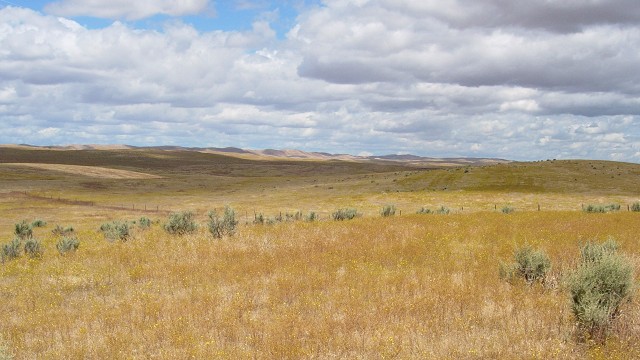
We have been studying Mars with spacecraft for almost 40 years now, starting with fly-bys and progressing to landers and then rovers. Each of these scientific missions has been more ambitious than the one before, and each has found more and more Earth-like features on Mars. The latest example was announced last month in San Francisco at the annual AGU meeting: Mars has veins of gypsum. I've seen gypsum veins myself, right here in California. And you can too.
The currently operating Mars rover is named Opportunity, and it has managed to roll across the pristine Martian ground for more than 33 kilometers since it landed in 2004. Nosing around the rampart of the crater Endeavour in a monotonous area of basalt rock, Opportunity came upon the vein of solid bone-white mineral shown above. It approached closer and turned its alpha particle X-ray spectrometer on the stuff, along with its close-up camera. The spectrometer indicated sulfur and calcium in the right proportions, and the camera images reminded NASA scientists of nothing but gypsum, hydrated calcium sulfate or CaSO4·2H2O.

All right, so what? Well, gypsum points directly and unmistakably to liquid water, something that we've been looking for on Mars but never quite proving. There is gypsum-like dust blowing around parts of Mars, like it does at White Sands in New Mexico, but no sign of its origin. The mission's chief scientist, Steve Squyres, said at the AGU press conference, "This stuff was formed right here. There was a fracture in the rock, water flowed through it, gypsum was precipitated from the water. End of story. Okay, there is no ambiguity about this. This is what makes it so cool. . . . Here the chemistry and mineralogy of it just scream of water."
On Earth, gypsum is found in two main settings: wherever seawater begins to dry up, gypsum comes out of solution first and can accumulate in thick beds. And wherever hot-spring type fluids concentrate dissolved matter, gypsum is a likely mineral. The Martian vein appears to be of the latter, hydrothermal type. California's Central Valley, for much of recent geologic time, has been the former type of setting—a shallow sea basin or brackish lake.
Gypsum is especially abundant in the Kettleman Hills, an area of former Central Valley seabed that has been gently lifted by recent tectonic activity. If you have an extra hour next time you're on Interstate 5 going to Los Angeles, turn off at 25th Avenue, south of Kettleman City, and pull over once you enter the hills. Gypsum litters the ground there, and farther south near Lost Hills gypsum is being mined to make drywall, soil additives and plaster of Paris.

If you're there in nice weather, enjoy the scene and think of Mars. Maybe you'll share the tantalizing feeling that the discovery of Martian gypsum arouses in geologists despite their best mental effort.


Like one of those 1950s-vintage Cuban taxis, Opportunity has hung on far longer than people originally planned. Planetary space missions have a fairly short "prime mission" of a few months or maybe a year, but everyone knows without admitting it that the rugged, overdesigned machinery will last a lot longer. NASA makes a big deal out of extending the mission, a year or so at a time, and we all feel good about getting our money's worth. In the case of Opportunity, its prime mission began eight years ago and the solar-powered contraption is still plugging along. Imagine what its successor, the rover Curiosity, might do once it lands in Gale crater in August of this year.
